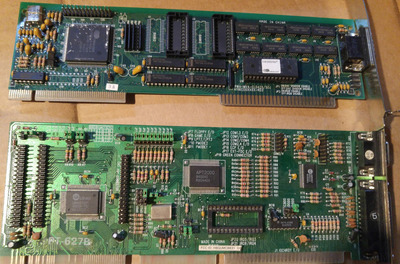First post, by CoffeeOne
Was anybody successful running this board @60MHz?
This board officially supports 20 to 50MHz.
But one can set 60, 66 and 80MHz, too. Most of those boards have the MX8315 clock generator.
So the complete table until 66MHz for revision 2.0 then is:
clock JP23 JP24 JP2520MHz 1-2 1-2 1-225MHz 2-3 1-2 1-233MHz 2-3 2-3 2-340MHz 2-3 2-3 1-250MHz 1-2 1-2 2-360MHz 1-2 2-3 1-267MHz 2-3 1-2 2-3
I need both VLB slots, one for the graphics one for the I/O card.
When I set the clock to 60MHz, with a known good AMD CPU, that runs on 3x 40MHz and also on 2x 50MHz, the board does not come up.
By removing the I/O card, I can see a picture on the screen showing the cpu running at 120MHz. But I can't use the graphics card only for obvious reasons.
Has anyone a running combination @60MHz with 2 cards? I know, it is far out of spec.
